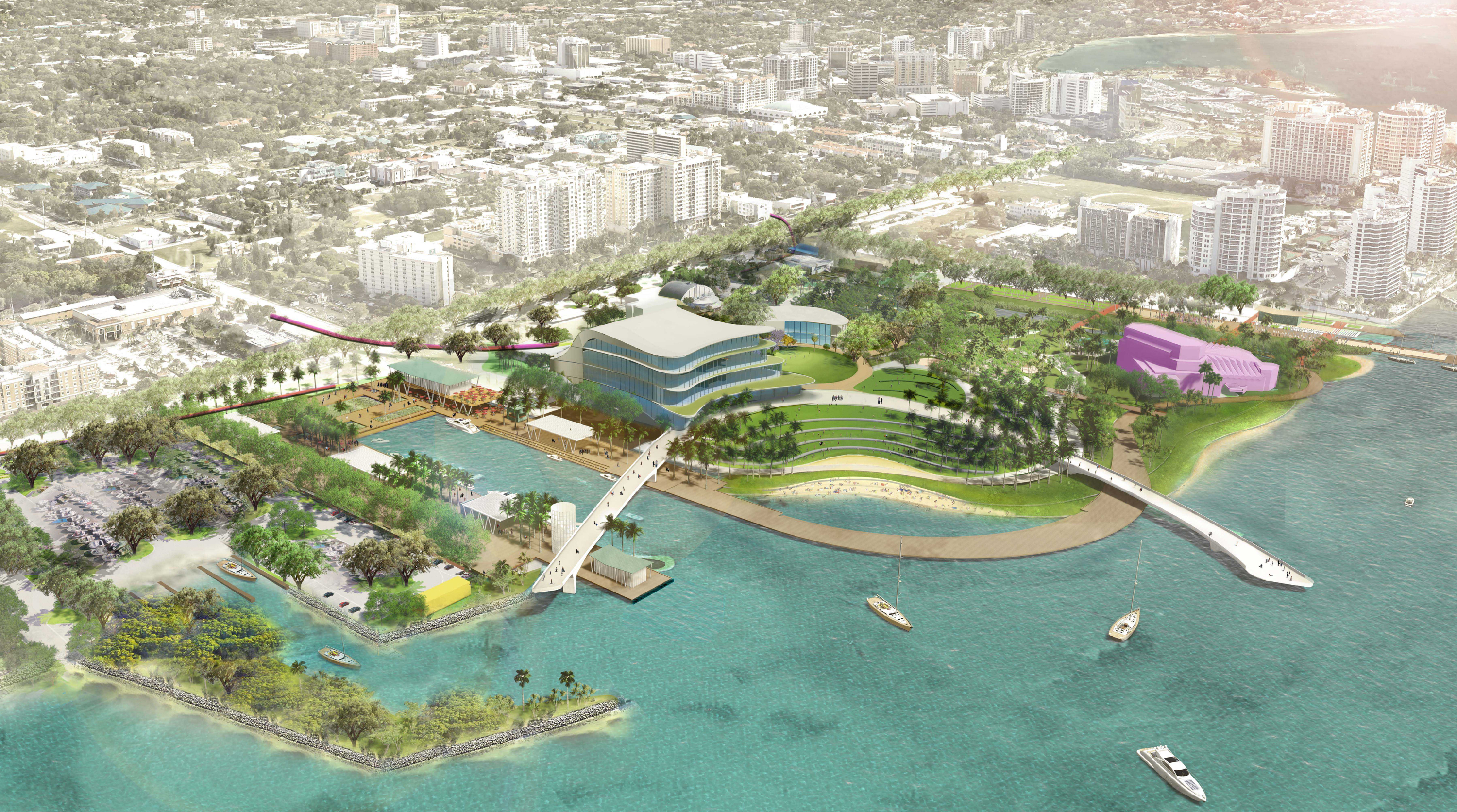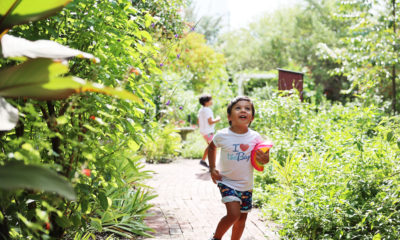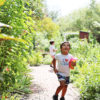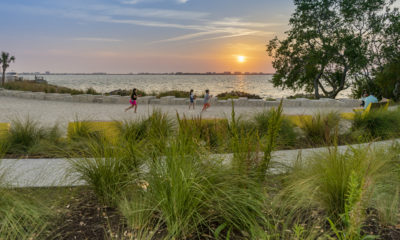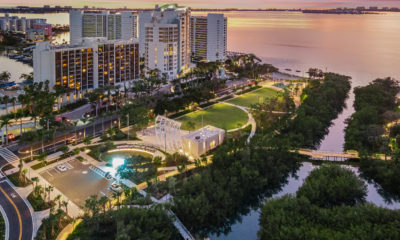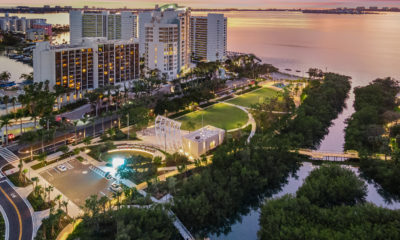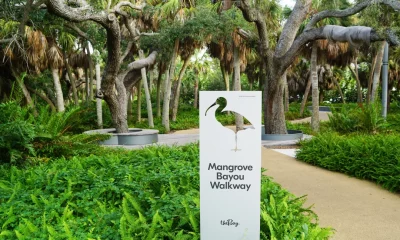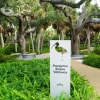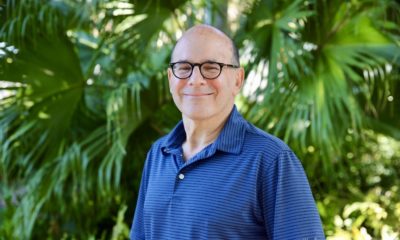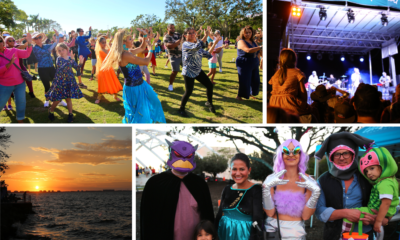Despite Some Issues, The Bay Park Funding Plan Presses Ahead
The original article by Timothy Fanning appeared in the Sarasota Herald-Tribune on October 20, 2020
SARASOTA — The city of Sarasota has given one of the final required financial stamps of approval to raise money for a plan to turn 53 acres of downtown waterfront land into an urban oasis.
Monday’s vote came after nearly a yearlong back-and-forth between the city of Sarasota and Sarasota County to shape the terms of an interlocal agreement for a tax increment financing plan expected to generate more than $200 million for The Bay project over the next three decades.
But the plan came with a number of issues, including a warning from city staff that certain last-minute changes made by the City Commission might derail the effort. It also came with an apparent oversight included in the language of the agreement that may have risked earmarking all of the money for a new $250 million performing arts center that would replace the Van Wezel.
An email from Dan Lobeck suggested that the use of “either” and “or” in the context of one paragraph might lead to an interpretation that money could be allocated for only one of three items rather than all three. Lobeck is a local attorney and president of Control Growth now, who warned commissioners ahead of Monday’s meeting of the issue that he said could affect spending on the bayfront project.
“As a lawyer, I can tell you that words matter,” Lobeck said on Monday. The city corrected the error.
Eyes on the county
The last-minute changes, while meant to improve transportation options for more than just vehicles, came with a warning from the city’s top staff that it could potentially be a dealbreaker for the county, which has placed strict limitations that the money must be used within the bayfront area.
“Any money used outside of the district would be a showstopper,” said John Lege, the assistant city manager.
City Manager Tom Barwin said it could be perceived as a threat and that suggesting potential funding outside of the scope of the project could be “problematic” and that it may “put the whole agreement at risk.”
That charge was led by Mayor Jen Ahearn-Koch and Commissioner Willie Shaw and was aimed at including some wiggle room to allow the city to use some of the money to help pay for a ride service program or other transportation services from area parking garages.
The interlocal agreement will head back to the County Commission on Wednesday for review and potential final approval.
In an email late Monday, City Attorney Bob Fournier said that he considered the revisions made by the city commissioners to be minor, but would talk with the county attorney’s office about them later this week.
Now all eyes are on the county, which has repeatedly expressed reservations about the tax funding agreement.
Last month, County Commissioner Christian Ziegler expressed some concern about directing millions of dollars in property tax revenue toward a project given the uncertain state of the economy. Commissioner Michael Moran, an frequent critic, was absent last month due to a family emergency and did not vote on the proposal. He is also running for re-election this year.
On Tuesday, Commissioner Al Maio said he considered the revisions “benign.”
Tax increment financing, or TIF, devotes increased revenue from rising property values spurred by development improvements to further enhancements in the district, continuing the cycle of rising values and more improvements.
The increased revenue is generated from both the city and county property tax rates within the special taxing district. The money will be placed in a trust to pay for the park, a new performing arts center to replace the Van Wezel and a number of other improvements to bicycle and pedestrian facilities.
Bill Weddill, the chief implementation officer of the Bay Park Conservancy, noted that the TIF boundary picks up a number of bike and pedestrian network improvements a long-range transportation plan for the area.
The city has also allocated money for design and $3 million for some of the key improvements to Sarasota in Motion, the city’s ambitious multi-modal transportation plan.
“We believe there is plenty of opportunity to help the city implement Sarasota in Motion to connect downtown neighborhoods to the bayfront,” Weddill said.
But Ahearn-Koch said she would like to see more transportation connections between area parks and parking garages.
“There’s a rational nexus between leaving your car in the Palm Avenue Parking Garage, so that we can have more park spaces at the actual park,” Ahearn-Koch said.
Shaw agreed.
“Without that connectivity being a piece of this conversation” it would effectively cut out less affluent communities, Shaw said.
Commissioner Liz Alpert notes that the agreement with the county cannot be expected to solve every other issue the city has.
“We’ve got an election coming up on Nov. 3, we could have a whole new City Commission, we could have a whole new County Commission,” Alpert said, who is up for re-election, along with Shaw.
“I don’t want to risk this not getting approved right now and killing this project for forever because we want to try to solve all the other problems or issues or things that we would like to get resolved in the city,” Alpert said.
Ahearn-Koch responded: “I don’t want to take a vote based on fear of an election. I want to do what’s right for this community, and what’s right for everybody in the city.”
Details remain
The Bay’s website estimates the entire project will cost $500 million. That covers the cost of all of its planned capital facilities, including a new performing arts center and its garage. Park improvements alone are estimated at $100-$150 million.
Sarasota’s philanthropic and business community praised the TIF agreement — with some saying it would act as a sort of signal for more donors who are waiting to see what government officials do.
Teri Hansen, the president and CEO of Charles and Margery Barancik Foundation, which has donated more than $1 million toward the project, noted that for every dollar raised in the TIF, $3-$4 will be donated from the private sector.
“Should this TIF not move forward, it may send a negative message to those who would have invested otherwise in both the park and the performing arts hall that you, our government, is not supportive of,” Hansen said.
Jon Thaxton, a former county commissioner and vice president of community investment at the Gulf Coast Community Foundation, noted the environmental benefits of the project.
Thaxton said this was one of those “three to five generational chances; there’s never been a better opportunity.”
But several residents, particularly those who live within the district, worried about potential long-term impacts for taxpayers if philanthropic contributions don’t materialize and construction costs increase.
Using January 2019 as a base year, the TIF would begin generating payments in 2022.
Donna Moffitt, a city resident who lives in the TIF district, noted that the first phase of the project was supposed to cost between $15-$20 million and be financed largely through philanthropic donations. The first phase is now estimated at $25 million and funded largely by residents.
Moffitt noted that the city is making a 30-year assumption.
“That’s a long time; what if you’re wrong?” she said.
Several residents demanded to see a financial plan that would guarantee financial viability.
Bill Diehl, a Sarasota resident, questioned how the city will keep the construction costs under control.
“The devil is in the detail,” said Diehl. “Well, you’re down to the detail and I sure hope you get it right.”
A.G. Lafley, the founding CEO of the Bay Conservancy, noted that initial estimates in spring 2019 were “aspirational” and could easily have been $33 million.
Lafley said the Bay Park further estimated that 80% of that phase would be raised from grants or private sources. About $3 million of that would be funded through the TIF district.
“The Bay Park Conservancy can now go back out to a lot of private sources of potential investment capital who’ve been sitting on the sidelines, frankly waiting to see if the government will step forward and fund what would be about half of the total project,” Lafley said.
Lafley also said that the Bay Park Conservancy is also subject to open records law and that their financials are open for inspection any time anyone wants.
“We are ultra conservative on the financing side,” Lafley said. “All of our budgets are public and in the sunshine.”


